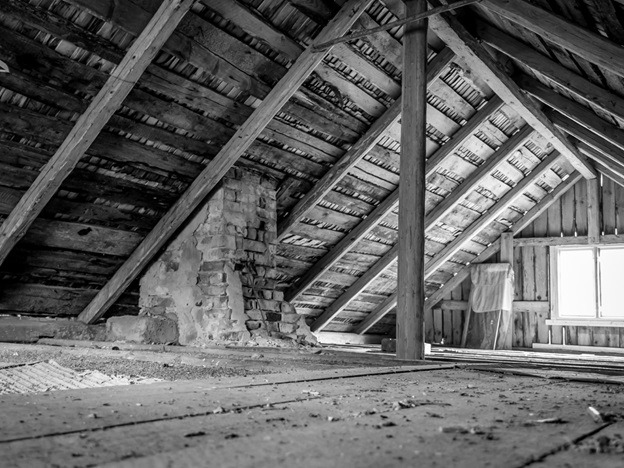Although mold spores are found in the air, they will not grow unless they attach themselves to a moist surface. In this regard, it is not uncommon to have attic molds at home because the place is often damp, making it the ideal breeding ground for these common fungi. If the attic is made from wood, which is usually the case, this also becomes a good food source for molds.
Many homeowners hardly go to the attic except to store broken or old items, which makes the growth of molds go unnoticed. Often, it’s only when a thorough home inspection is done that the presence of mold in the attic is discovered.
Is Attic Mold Dangerous?
Molds, regardless of where they grow, are quite dangerous to have near people. A mold-infested attic, for instance, can spread hazardous spores in the indoor air, causing irritation to the eyes, lungs, and throat of anyone who inhales the affected air. People who have asthma, meanwhile, could experience a sudden episode. Given this, it is vital that you do not underestimate the dangers of mold growth in your attic.
Signs of Molds in Your Attic
Many homeowners often find out about mold in their attic when they sell their homes. The house inspector is the one who usually notices this. If not resolved, attic molds can affect your chances of getting your house sold.
Below are some signs that mold has infected your attic.
1. Dark Stain s
Attics, especially the walls and flooring, are usually made of plywood. Slight discoloration in these places could be due to moisture. If the dark stain is persistent, it could be mold.
2. Stuffy Environment
If your attic has poor ventilation, which is usually the case in most homes, there’s usually a feeling of stuffiness. When this is the case, mold growth is likely to happen.
3. Mildewy Smell
Molds have a distinctive smell, so use this when searching for the fungi in the attic. If the place is starting to smell musty, mildew could be forming, so look for this and have it removed before it grows into a full-blown mold.
4. Smoke Detector Drips
A professional from Deep Water Emergency Services & Restoration said that a smoke detector that drips with water indicates that there’s excess moisture in the attic. If you don’t address the problem right away, mold can eventually grow in that part of your house.
5. Frost Buildup
Water vapor can freeze on your roof’s underside during the cold season. If your attic has poor ventilation, there will be dampness in the area. This can promote the growth of molds.
How to Prevent Mold Growth in the Attic
The presence of molds in the attic can be attributed to moisture issues. The easiest way to remove the fungi is to eliminate any excess water. Other than this, there are several things that you can do to ensure that molds don’t consider your attic their next home. These can include the following:
1. Observe Cleanliness
Whenever you go to the attic, make sure you clean the place before leaving. Even if you don’t use the attic often, it’s important that you do regular cleaning to keep the place dry and safe. Hiring a professional cleaning expert at least once every two years is also highly recommended.
2. Do Regular Inspection
A thorough inspection of the entire attic is not necessary because what you just need to find out is if there is any damage in the area. A quick glance around should suffice, but if you’re checking for molds, you should take note of any damp spots.
3. Install Attic Vents
The plumbing stack or vent in your attic is a vertical pipe attached to the roof vent. It prevents sewer gases from entering your home and allows wastewater gas to escape. This is not found in most attics, so if you don’t have one, you should consider getting it installed soon. It is also important that the vent is installed correctly. If not, it could trap gases instead of allowing them to escape.
Key Takeaway
The attic is the most dangerous area to work on when it comes to home repairs, cleanups, or upgrades. Experts who are tasked to remove molds from the attic often admit that the job is not only difficult but also risky. It is because of the possibility of falling through the floor joists and sustaining serious injuries.
Even if this is the case, professional mold specialists are still the best people to contact if you want to get rid of molds in your attic. Normally, they will take note of the type of mold found in your attic and the best way to solve them. Furthermore, they have the experience and knowledge they can rely on when they take on the job.

